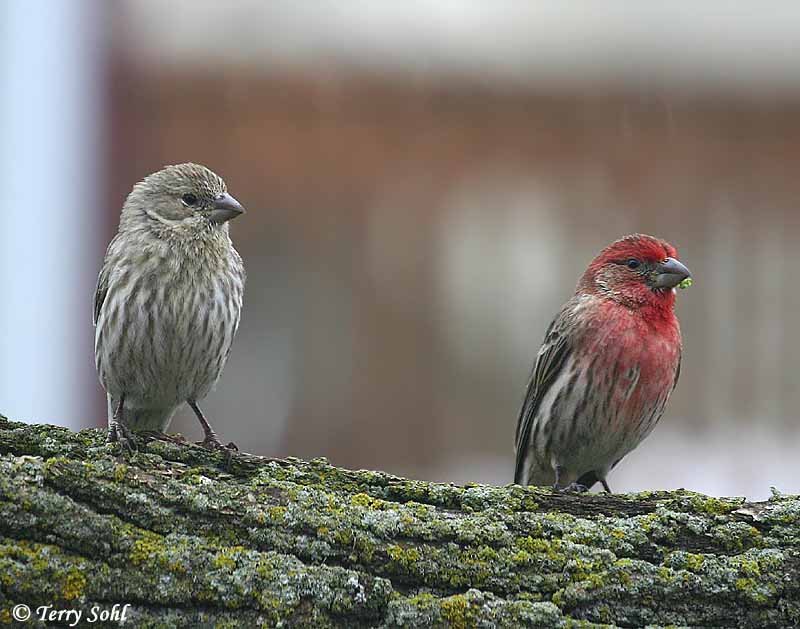Table Of Content

However, there are a few key things to look for if you want to identify them correctly. One of the easiest ways to tell them apart is by their head and bill shape. The head and bill of a house finch are rounder and perhaps larger in comparison to its purple cousin.
Learn about birds
All About the Colorful Finch Bird Family - Birds & Blooms
All About the Colorful Finch Bird Family.
Posted: Wed, 01 Mar 2023 08:00:00 GMT [source]
The average weight of the Purple Finch is 25 grams, while House Finches weigh 20 grams. This pair of closely related species can be a challenge to identify! However, we can identify them by paying close attention to certain field marks and vocalizations.
Nesting
Males have a bright red head, wings, and tail, while females possess a brownish coloration. Purple finches have a more varied, slightly bumpy and fluid song, with a clear, musical tone, compared to the house finches which have a simpler, flatter, and raspy sound. The main difference between a purple finch and house finch is the color, especially the color of the head and chest in males. Male purple and house finch babies resemble adult females in that they haven’t developed their red or pink coloring yet.
Flight
Individuals from the western states tend to be more olive colored on the back with less well-defined streaks on the belly. It is important to note that a conclusive identification is not always possible. Over time, birders will less experience can develop familiarity with the birds that will help them identify each species without confusion.
House Finch Similar Species Comparison
The first is speckled and a little pointy at one end, whereas the second is rounder and doesn’t have any spots on their surface. House finches have a more extended tail than purple finches, yet just show a weak score that isn’t noticeable all of the time. Purple finches have more limited tails with a significantly more unmistakable indent. Tail scores should be visible on roosted birds however are difficult all of the time to look at. Hence, let’s dive in and learn more about the different features of a house finch and purple finch that you have to look into to make a comparison. The females of both of these finches are not colorful like the males.
Both finches mainly eat seeds, berries and other plant matter, mixed with some insects and invertebrates in the breeding season. House finches only typically eat very small insects, such as aphids, whereas Purple finches eat larger insects, such as spiders and beetles. Male House Finches present an extra identification challenge because their color can be very variable.
Purple Finch Range and Habitat
Females usually sing a warbling song that lasts for up to 2 minutes. How can you make the difference between a common house finch and a purple finch song? Unfortunately, the sounds that both of these species make are quite similar. However, their call notes do differ, and they can be used to distinguish a house finch vs purple finch. In males, the iconic coloration is a rich raspberry-red, extending across the head, back, and throat with brown patterns on the wings.
Females are coarsely streaked below, with strong facial markings including a whitish eyebrow and a dark line down the side of the throat. The Purple finch is slightly larger and heavier and generally has a somewhat heavier build. Purple finches (Haemorhous purpureus) and House finches (Haemorhous mexicanus) are two of the most easily confused birds in North America. Although these finches may argue with each other over breeding territories and food, for the most part, House Finches get along with each other. Breeding at an early age and having fairly large clutches probably helps offset the rather short lifespans of these finches, and other small birds with similar habits.
Female House Finch vs Purple Finch Female
Purple Finches are agile foragers, often hopping and climbing among branches in search of seeds and insects. Their foraging is meticulous, and they extract seeds from cones with precision. They tend to explore the upper canopy of trees, utilizing their agility to navigate through branches in search of food. Purple Finches exhibit a preference for secluded spots within the forest canopy for nesting. Their cup-shaped nests are often nestled in the branches of trees, strategically placed to provide both protection and concealment. House Finches have showcased remarkable adaptability to urban and suburban landscapes.

Male House Finches usually appear more orange or yellow, while male Purple Finches typically display a deep cranberry or raspberry color. Understanding the differences in diet and feeding behavior between purple finch and house finch can aid in observing and monitoring these fascinating bird species. Their food preferences and feeding behaviors are essential in determining their survival and population density, especially with regard to human activities like bird feeding. Feeding behaviors and preferences are crucial in understanding the differences between purple finch and house finch. Both species have unique characteristics when it comes to diet and feeding, which affect their hunting and foraging methods. While the purple finch and house finch may look alike, their songs and calls differ significantly.
You’re quite unlikely to see Purple finches if you live in the city, whereas House finches are common in urban environments. The House finch is a flexible type, hence why it’s common and expanding throughout the US. Both birds are capable of territorial aggression, but House finches are much less territorial than Purple finches on the whole.
Their redness extends over most of their bodies, including their backs and wings. Purple finches nest in the summer along the Pacific Coast of the United States, in the Northeastern United States, and in Canada. You can distinguish a House Finch from a Purple Finch by observing the shape and length of their tails. House Finch tails extend beyond their wings and have rounded feathers, whereas the Purple Finch tail barely extends beyond its wings and the feather tips are pointy. House Finches have a wide variety of nesting habits, often choosing to build nests in ivy growing on buildings and trees or man-made structures such as window ledges. On the other hand, Purple Finches typically nest in forest conifers or shrubs.
Both the female Purple Finch and House Finch are primarily responsible for incubating the eggs. Incubation typically lasts around 12 to 14 days for both birds, during which the female diligently keeps the eggs warm by sitting on the nest. The male occasionally relieves the female from incubation duties by bringing her food. In their natural habitat of coniferous and mixed forests, Purple Finches often feed on the seeds of pine cones and other tree seeds. The eggs of Purple Finches are typically pale blue or greenish with small speckles. The coloration and markings can vary, but they often have a subtle and delicate appearance.
House finches are red or red-orange and the color is usually limited to their heads and their upper chest. The rest of the body can be anything from orange and yellow to light brown. If you have spotted a red breasted finch in your backyard, it’s likely for it to have been a house finch. When it comes to body shape and size, there aren’t too many differences between a house finch bird and a purple finch. However, the first is usually more slender compared to the second, and they will also have a more sizable head. Both purple and house finches can be found across North America, and both prefer habitats that are coniferous.

No comments:
Post a Comment